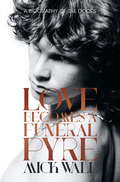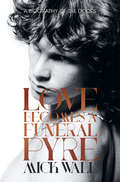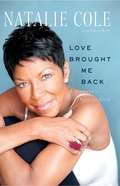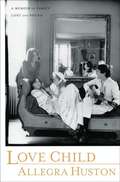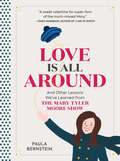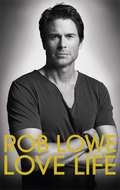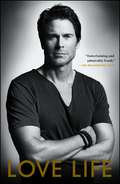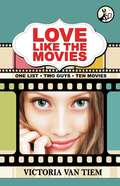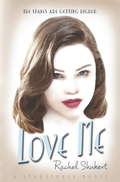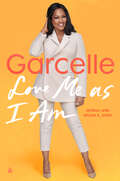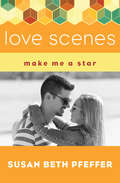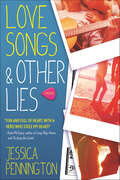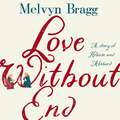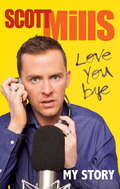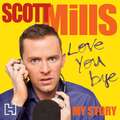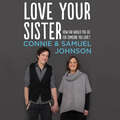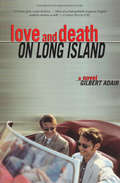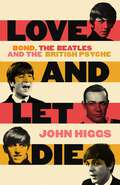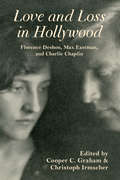- Table View
- List View
Love Becomes a Funeral Pyre: A Biography of The Doors
by Mick Wall'Explodes in to life from the opening paragraph' RECORD COLLECTORThink you know the story of Jim Morrison and The Doors? This revelatory and explosive biography from critically acclaimed rock journalist Mick Wall will make you think again.'The pick of the best guitar tomes: Wall's account pulls no punches, cataloguing each of the primal scenes - early performances, indecent exposure, Jim's sexuality, decline and death' GUITARISTIn 1971, Jim Morrison was found dead in a club toilet in Paris. He was 27 years old. Since then, The Doors have been the subject of a mystery fuelled by sensationalised rumours and empty conjecture.In this definitive account of Jim Morrison and The Doors, critically acclaimed rock writer Mick Wall unravels the myths surrounding the iconic band and its frontman, and captures the unique and unforgettable spirit of the sixties. A brilliantly penetrating and long-overdue biography, Love Becomes a Funeral Pyre questions the idolisation of Jim Morrison and considers the story of The Doors in all of its uncomfortable truth.
Love Becomes a Funeral Pyre: A Biography of The Doors
by Mick Wall'Explodes in to life from the opening paragraph' RECORD COLLECTORThink you know the story of Jim Morrison and The Doors? This revelatory and explosive biography from critically acclaimed rock journalist Mick Wall will make you think again.'The pick of the best guitar tomes: Wall's account pulls no punches, cataloguing each of the primal scenes - early performances, indecent exposure, Jim's sexuality, decline and death' GUITARISTIn 1971, Jim Morrison was found dead in a club toilet in Paris. He was 27 years old. Since then, The Doors have been the subject of a mystery fuelled by sensationalised rumours and empty conjecture.In this definitive account of Jim Morrison and The Doors, critically acclaimed rock writer Mick Wall unravels the myths surrounding the iconic band and its frontman, and captures the unique and unforgettable spirit of the sixties. A brilliantly penetrating and long-overdue biography, Love Becomes a Funeral Pyre questions the idolisation of Jim Morrison and considers the story of The Doors in all of its uncomfortable truth.
Love Becomes a Funeral Pyre: A Biography of the Doors
by Mick WallFrom one of rock's greatest writers, Love Becomes a Funeral Pyre is the definitive biography of the Doors Spanning the entire history of the band, from the birth of its members to the deaths of those who have departed, this book will long remain the definitive history of a band that changed the history of popular music. The band that started out as the "American Rolling Stones," noted for their wildly unpredictable performances, their jazzy vibe, and the crazed monologues of their front man, ended as badly as did the '60s: abruptly, bloodily, cripplingly. Along with evoking the cultural milieu of Los Angeles in the era, bestselling writer Mick Wall captures the true spirit of that tarnished age. From the release of their classic first album, The Doors, to their last with Jim Morrison, L.A. Woman, this band biography is a brilliantly penetrating and contemporary investigation into the real story of the Doors.
Love Brought Me Back: A Journey of Loss and Gain
by David Ritz Natalie ColeIN THIS LUMINOUS MEMOIR, LEGENDARY SINGER AND ACTRESS NATALIE COLE TELLS A REMARKABLE STORY OF LIFE-THREATENING ILLNESS AND RECOVERY, AND THE STORY OF A DEATH THAT BROUGHT NEW LIFE. In 2009 Natalie Cole was on dialysis, her kidneys failing. Without a kidney transplant, her future was uncertain. Throughout Natalie's illness one of her biggest supporters was her beloved sister Cooke. But then Cooke herself became ill, with cancer. Astonishingly, as Cooke lay dying in a hospital, Natalie received a call that a kidney was available, but the surgery had to be performed immediately. Natalie couldn't leave her sister's side--but neither could she refuse the kidney that would save her own life. This is a story of sisters, Natalie and Cooke, but also of the sisters who made the transplant possible, Patty and Jessica. It was Jessica's death that gave new life to Natalie, even as Natalie experienced the devastating loss of Cooke. Patty, too, suffered her own terrible loss, but when she met Natalie, she found that her sister's spirit still lived. Through the gift of life, Natalie and Patty became sisters in spirit. Love Brought Me Back is a story of loss and recovery, sorrow and joy, success and despair--and, finally, success again. It will touch you as few memoirs ever have.
Love Child: A Memoir of Family Lost and Found
by Allegra HustonWhen Allegra Huston was four years old, her mother was killed in a car crash. Soon afterward, she was introduced to an intimidating man wreathed in cigar smoke -- the legendary film director John Huston -- with the words, "This is your father." So began an extraordinary odyssey: from the magical Huston estate in Ireland to the Long Island suburbs to a hidden paradise in Mexico -- and, at the side of her older sister, Anjelica, into the hilltop retreats of Jack Nicholson, Ryan O'Neal, and Marlon Brando. Allegra's is the penetrating gaze of an outsider never quite sure if she belongs in this rarefied world and of a motherless child trying to make sense of her famous, fragmented family.
Love Is All Around: And Other Lessons We've Learned from The Mary Tyler Moore Show
by Paula BernsteinA fun and inspirational homage to The Mary Tyler Moore Show -- now 50 years after its debut -- with "life lessons" on how Mary Richards serves as an icon and inspiration for generations of women to "make it after all." When the character of Mary Richards walked into the WJM News Room in the fall of 1970, one of the most beloved shows in television history was born. The Mary Tyler Moore Show would win 29 Emmys over its 7-year run, and would later be lauded as one of the most influential TV shows of all time. Not only that, but Mary Richards would become an icon and inspiration for future generations of women (for example, Oprah Winfrey, Andrea Mitchell, and Tina Fey have all credited Mary with inspiring their careers). Now entertainment writer Paula Bernstein writes this charming celebration of this groundbreaking show, offering not only fun trivia and history, but also the "lessons" we've gleaned, including:Make the Most of a Small Space. Mary's adorable nook in a Victorian home became TV's most famous bachelorette pad -- and, with Mary's "M" on the wall, inspired thousands of women to adopt their own first initial as home décor.Get Along with Everyone at Work. Lou Grant was grumpy, Ted Baxter a blowhard, and Murray an all-around nice guy. Mary worked with all her colleagues with grace and style. (And at the time, Mary's position as Associate Producer at WJM was glass-shattering!).You Can Have the Town -- Take it!: How Mary's famous "hat throw" was an inspiration to independent, working women everywhere.And many more!
Love Is the Cure: On Life, Loss, and the End of AIDS
by Elton JohnIn the 1980s, Elton John saw friend after friend, loved one after loved one, perish needlessly from AIDS. In the midst of the plague, he befriended Ryan White, a young Indiana boy ostracized by his town and his school because of the HIV infection he had contracted from a blood transfusion. Ryan's inspiring life and devastating death led Elton to two realizations: His own life was a mess. And he had to do something to help stop the AIDS crisis.Since then, Elton has dedicated himself to overcoming the plague and the stigma of AIDS. He has done this through the Elton John AIDS Foundation, which has raised and donated $275 million to date to fighting the disease worldwide. Love Is The Cure is Elton's personal account of his life during the AIDS epidemic, including stories of his close friendships with Ryan White, Freddie Mercury, Princess Diana, Elizabeth Taylor, and others, and the story of the Elton John AIDS Foundation. With powerful conviction and emotional force, Elton conveys the personal toll AIDS has taken on his life -- and his infinite determination to stop its spread.Elton writes, "This is a disease that must be cured not by a miraculous vaccine, but by changing hearts and minds, and through a collective effort to break down social barriers and to build bridges of compassion. Why are we not doing more? This is a question I have thought deeply about, and wish to answer-and help to change-by writing this book."Sales of Love Is the Cure benefit the Elton John AIDS Foundation.
Love Johnny Carson: One Obsessive Fan's Journey to Find the Genius Behind the Legend
by Mark MalkoffA wildly entertaining book by one of the world&’s most obsessed and informed fans of TV icon Johnny Carson, setting the record straight on Carson's legacy and shining light on the personality behind the legendary comedian and talk show hostOver the course of his thirty-year career hosting The Tonight Show, Johnny Carson appeared on some 4,500 broadcasts, interviewed over 25,000 guests, and solidified himself as a warm, witty, comforting presence to US audiences during turbulent times.Carson aficionado Mark Malkoff has amassed more Carson stories from original sources than anyone in entertainment history, speaking to over four hundred individuals, and now, in Love Johnny Carson, he sets the record straight in this comprehensive portrait of Carson's life, career, legacy, and character. Read about the debuts of stand-up comics like David Letterman and Ellen DeGeneres, the never-before-detailed reasons why Johnny stopped talking to Joan Rivers, why he banned guests like William Shatner and Orson Welles, the true origins of Carnac the Magnificent (it wasn&’t stolen from Steve Allen), the part Johnny played in getting Nixon elected president, the beloved comedian who the Carson writers dreaded guest-hosting, and many other behind-the-scenes stories of the funniest and most beloved Carson moments of all time.In the end, Malkoff's book serves not only as a biography but also as a love letter; a love letter to show business, to personalities, and to the singular show-business legend of Johnny Carson.
Love Life
by Rob LoweROB LOWE IS BACK WITH STORIES HE ONLY TELLS HIS BEST FRIENDS. When Rob Lowe's first book was published in 2011, he received the kind of rapturous reviews that writers dream of and rocketed to the top of the bestseller list. Now, in Love Life, he expands his scope, using stories and observations from his life in a poignant and humorous series of true tales about men and women, art and commerce, fathers and sons, addiction and recovery, and sex and love. In Love Life, you will find stories about: * KISSING UNEXPECTEDLY * THE SECRETS THEY DON'T TEACH YOU IN ACTING SCHOOL * HIS GREAT-GREAT-GREAT-GREAT-GREAT GRANDFATHER'S ROLE IN THE AMERICAN REVOLUTION * PARKS AND RECREATION, BEHIND THE CANDELABRA, AND CALIFORNICATION * TRYING TO COACH A KIDS' BASKETBALL TEAM DOMINATED BY HELICOPTER PARENTS * THE HOT TUB AT THE PLAYBOY MANSION * STARRING IN AND PRODUCING A FLOP TV SERIES * CAMPING AT SEA WORLD * PLAYING SAXOPHONE FOR PRESIDENT BILL CLINTON * THE FIRST JOURNEY TO COLLEGE WITH HIS SON * WARREN BEATTY * THE BENEFITS OF MARRIAGE Throughout this entertaining book, you will find yourself in the presence of a master raconteur, a multi-talented performer whose love for life is as intriguing as his love life.
Love Life
by Rob LoweOn the heels of his New York Times bestselling Stories I Only Tell My Friends, Rob Lowe is back with an entertaining collection that “invites readers into his world with easy charm and disarming frankness” (Kirkus Reviews).After the incredible response to his acclaimed bestseller, Stories I Only Tell My Friends, Rob Lowe was convinced to mine his experiences for even more stories. The result is Love Life, a memoir about men and women, actors and producers, art and commerce, fathers and sons, movies and TV, addiction and recovery, sex and love. Among the adventures he describes in these pages are: · His visit, as a young man, to Hugh Hefner’s Playboy Mansion, where the naïve actor made a surprising discovery in the hot tub.· The time, as a boy growing up in Malibu, he discovered a vibrator belonging to his best friend’s mother.· What it’s like to be the star and producer of a flop TV show.· How an actor prepares, for Californification, Parks and Recreation, and numerous other roles.· His hilarious account of coaching a kid’s basketball team dominated by helicopter parents.· How his great, great, great, great, great grandfather may have inspired everything from his love of The West Wing to his taste in classic American architecture.· His first visit to college, with his son, who is going to receive the education his father never got.· The time a major movie star stole his girlfriend. Linked by common themes and his philosophical perspective on love—and life—Lowe’s writing “is loaded with showbiz anecdotes, self-deprecating tales, and has a general sweetness” (New York Post).
Love Like the Movies
by Victoria Van TiemIn this irresistible romantic romp, movie fanatic Kensington Shaw is thrown into love--Hollywood-style--when her gorgeous ex presents a series of big screen challenges to win back her heart.What girl wouldn't want to experience the Pretty Woman shopping scene? It's number two on the list. Or, try the lift from Dirty Dancing? It's number five. One list, ten romantic movie moments, and a handful of shenanigans later, Kenzi has to wonder...should she marry the man her family loves, or risk everything for a love like the movies?
Love Me
by Rachel ShukertA new series set in the golden age of glam . . . Amanda is heartbroken. She's tried, but she can't get over her breakup with hotshot writer Harry Gordon. If only she could talk to him, she could convince him that their love story is bigger than any screenplay. But Amanda isn't the only one in Hollywood keeping a secret--Harry's got one too. Margo has to pinch herself: there's talk of her getting an Oscar nom for her first film role, and she's living with the Dane Forrest, the gorgeous movie star millions--including herself--swoon over. But if the public finds out about their domestic arrangement, her career will be over. The studio has a plan to fix it all . . . but is Margo prepared to pay the price?Gabby's drinking is out of control, but who cares? She's bored and depressed. She needs someone who will treat her like the woman she is beneath the silly stage costumes and pigtails. And she's sure unpredictable musician Eddie Sharp is The One. But playing with bad boys like Eddie isn't for little girls. . . ."In this scintillating sequel to Starstruck, the stakes are higher, the fights are cattier, and the drama soars sky-high . . . more twists and turns than Mulholland Drive. Secrets abound, and enough is held back to ensure that the next volume will have plenty left to reveal. This sizzling sequel definitely delivers the goods: think Valley of the Dolls meets Gossip Girl."--Kirkus ReviewsFrom the Hardcover edition.
Love Me as I Am
by Garcelle BeauvaisThe beloved Black pop culture icon, entrepreneur, Hollywood actress and Real Housewives of Beverly Hills star bares her life in this frank, funny, and fearless memoir about life, love and the pursuit of true happiness.Love Me As I Am is Garcelle Beauvais’s smart, inspiring, and raw memoir—an entertaining and unforgettable emotional rollercoaster ride that moves from her early childhood years in Haiti to her adolescence in Boston; from her heady days as a young model in New York—her first taste of real freedom—to Los Angeles and the many ups, downs, and then more ups, both personal and professional, she experienced in her three-decade acting career, including her massive fame as a star of The Real Housewives of Beverly Hills. Throughout her life, Beauvais has suffered from an emotional battle between her wild, rebellious nature and her desire to be a “good girl.” No matter how many cover stories she earned, “Most Beautiful” lists, or coveted roles in iconic series such as The Jamie Foxx Show and NYPD Blue, Beauvais could not cure herself of her “disease to please” or learn to put herself first. She also had to learn how to unapologetically put herself first. In Love Me As I Am, she brings together the voices of both the good girl and the rebel to deliver an unflinching examination of her successes and ongoing challenges as a mother, wife, daughter, sibling, and friend. Beauvais fearlessly talks about how she boldly embraced her sexuality in her 40s, and her determination to break free of the stereotypes that define and limit African American women in popular culture. Most importantly, she reveals how finally putting herself first led to better relationships with her three sons and even her ex-husband. Beauvais dishes too—offering juicy behind-the-scenes stories from movie sets, red carpet events, and The Real Housewives of Beverly Hills. Love Me As I Am is an unflinching look at one woman’s extraordinary journey to create a new and more exciting life—and to become the woman she was meant to be.
Love Scene, Take Two
by Alex EvansleyDebut author Alex Evansley delivers a sweet summer romance in this inventive novel about a young heartthrob and teen author falling in love. Teddy Sharpe is kind of famous. He might actually be on his way to being really famous, especially if he'd nailed an audition for the lead role in the movie adaption of the newest bestselling young adult book series. There's just one problem: He totally blew the audition. And he's stuck in a tiny North Carolina airport. And his maybe-ex-girlfriend kind of just broke up with him. The weekend isn't exactly looking good until Bennett Caldwell, author of the very book series he just auditioned for, takes pity on him and invites him to her family's lake house. Away from the glitz and glam of Hollywood for a few days, Teddy starts to relax . . . and somehow he and Bennett just click. But dating is hard enough when you aren't the subject of several dozen fanblogs, and the Internet is full of juicy gossip about Teddy and Bennett . . . gossip that Bennett might not be prepared to handle. Chosen by readers like you for Macmillan’s young adult imprint Swoon Reads, Alex Evansley's debut novel, written from both Bennett and Teddy's perspectives, will have teens laughing, swooning, and falling in love along with these fantastically relatable characters.
Love Scenes (Make Me a Star #5)
by Susan Beth PfefferMiranda, Molly, Alison, TJ, Bill, and Rafe are becoming stars on TV's biggest show, but with fame come responsibilities . . . Can they really have it all? Miranda is celebrating her seventeenth birthday. She can't believe it's been a whole year since she was cast in Hard Time High. Now she just got her own car and may finally get out from under the thumb of her family. But does she really want to move in with her costar Molly and her mother--especially since she and Molly aren't on great terms at the moment? Miranda's personal life starts looking up when she agrees to go on a blind date with Adam, who has a crush on the character Miranda plays on the show. The Los Angeles University senior is tall, dark, and totally un-California. And with Alison offered the chance to move beyond her beauty-queen looks as cohost of a teen talk show, Rafe wrapping a movie, and TJ's fan base growing, it looks like they're all getting ready for the next big thing. Will the upcoming season bring them the fame and happiness they've been searching for?
Love Songs & Other Lies: A Novel
by Jessica PenningtonIt's summer romance and second chances, the songs that stay in your head, and the boy you'll never forget.Two years after rock-song-worthy heartbreak, Virginia Miller is looking forward to a fun, carefree summer. Her friends just landed a spot on a battling bands reality show, and Vee is joining them for her dream internship on tour. Three months with future rockstars seems like an epic summer plan. Until she learns she’ll also be sharing the bus with Cam. Her first love, and her first heartbreak. Now Vee has more than just cameras to dodge, and Cam’s determination to win her forgiveness is causing TMZ-worthy problems for both of them. With cameras rolling, she’ll have to decide if her favorite breakup anthem deserves a new ending. And if she’s brave enough to expose her own secrets to keep Cam’s under wraps.Breaking Vee’s heart was never Cam’s plan. All he wanted senior year was a new life, in a new town, uninterrupted by the tragedy he left behind. Then Vee swept him into a whirlwind of friendship, musical adventure, and a love he didn’t expect or want. Now, he has a second chance to make it right. But things get complicated when ratings-crazy producers, cameramen, and fans are involved. Can he rewrite their love song with the whole world watching?Sometimes the last note is just the beginning. Love Songs & Other Lies is the debut romance from Jessica Pennington that Katie McGarry calls "fun and full of heart with a hero who stole my heart!”At the Publisher's request, this title is being sold without Digital Rights Management Software (DRM) applied.
Love Without End: A Story of Heloise and Abelard
by Melvyn BraggA profoundly thought-provoking, moving novel that breathes fresh life into one of history's most remarkable and enduring love stories. Paris in 1117. Heloise, a brilliant young scholar, is astonished when the famous, radical philosopher, Peter Abelard, consents to be her tutor. But what starts out as a meeting of minds turns into a passionate, dangerous love affair, which incurs terrible retribution. Nine centuries later, Arthur is in Paris to recreate the extraordinary story of Heloise and Abelard in a novel. To his surprise, his daughter visits and agrees to help, challenging his portraits of a couple who seem often inscrutable, sometimes breathtakingly modern. It soon emerges she is on her own mission to discover more about her parents' fractured relationship - and that Arthur's connection to his subject is more emotional than he cares to admit.(P)2019 Hodder & Stoughton Limited
Love You Bye: My Story
by Scott MillsThe story of how a painfully shy boy from the suburbs of Southampton made it to the biggest radio station in the UK, and just about managed to stay there...Scott Mills is a daily companion to millions of listeners as the host of the afternoon show on Radio 1 - a station that has been his home for over 14 years. Whether regaling us with a typically embarrassing celebrity anecdote or trying to control a particularly chaotic round of 'Innuendo Bingo', his company is always brilliantly entertaining, thanks to his infectious enthusiasm and easygoing manner. But behind the microphone sits a man whose route to the top has been anything but straightforward.In this witty and endearingly honest autobiography, Scott describes his incredible career and the hurdles he's faced along the way. Aside from the sometimes humiliating - and frequently hilarious - jobs that are part and parcel of a local radio DJ's apprenticeship, he's had to deal with crippling anxiety attacks, alcohol and weight issues, and a great deal more over the years. But his desire to land his dream job has always prevailed, and he's now one of the nation's favourite radio and television broadcasters, travelling the world on both serious assignments and altogether more bizarre adventures.From washing cars on a garage forecourt off the A4 in the name of radio entertainment, to encounters with some of the world's biggest celebrities, Love You Bye provides Scott's legions of fans with a fascinating look at the man whose voice they know so well.
Love You Bye: My Story
by Scott MillsThe story of how a painfully shy boy from the suburbs of Southampton made it to the biggest radio station in the UK, and just about managed to stay there...Scott Mills is a daily companion to millions of listeners as the host of the afternoon show on Radio 1 - a station that has been his home for over 14 years. Whether regaling us with a typically embarrassing celebrity anecdote or trying to control a particularly chaotic round of 'Innuendo Bingo', his company is always brilliantly entertaining, thanks to his infectious enthusiasm and easygoing manner. But behind the microphone sits a man whose route to the top has been anything but straightforward.In this witty and endearingly honest autobiography, Scott describes his incredible career and the hurdles he's faced along the way. Aside from the sometimes humiliating - and frequently hilarious - jobs that are part and parcel of a local radio DJ's apprenticeship, he's had to deal with crippling anxiety attacks, alcohol and weight issues, and a great deal more over the years. But his desire to land his dream job has always prevailed, and he's now one of the nation's favourite radio and television broadcasters, travelling the world on both serious assignments and altogether more bizarre adventures.From washing cars on a garage forecourt off the A4 in the name of radio entertainment, to encounters with some of the world's biggest celebrities, Love You Bye provides Scott's legions of fans with a fascinating look at the man whose voice they know so well.
Love You Bye: My Story
by Scott MillsThe story of how a painfully shy boy from the suburbs of Southampton made it to the biggest radio station in the UK, and just about managed to stay there...Scott Mills is a daily companion to millions of listeners as the host of the afternoon show on Radio 1 - a station that has been his home for over 14 years. Whether regaling us with a typically embarrassing celebrity anecdote or trying to control a particularly chaotic round of 'Innuendo Bingo', his company is always brilliantly entertaining, thanks to his infectious enthusiasm and easygoing manner. But behind the microphone sits a man whose route to the top has been anything but straightforward.In this witty and endearingly honest autobiography, Scott describes his incredible career and the hurdles he's faced along the way. Aside from the sometimes humiliating - and frequently hilarious - jobs that are part and parcel of a local radio DJ's apprenticeship, he's had to deal with crippling anxiety attacks, alcohol and weight issues, and a great deal more over the years. But his desire to land his dream job has always prevailed, and he's now one of the nation's favourite radio and television broadcasters, travelling the world on both serious assignments and altogether more bizarre adventures.From washing cars on a garage forecourt off the A4 in the name of radio entertainment, to encounters with some of the world's biggest celebrities, Love You Bye provides Scott's legions of fans with a fascinating look at the man whose voice they know so well.
Love You, Hate You: Ballet School Confidential
by Charis MarshFollow four young dancers in their first semester at the Vancouver International Ballet Academy while they work toward careers as professional ballet dancers. Kaitlyn, Taylor, Alexandra, and Julian are all students at the Vancouver International Ballet Academy where ballet and drama dominate everyone’s lives. Kaitlyn was the star at her old school, but the competition at VIBA is fierce and her reputation as a prodigy is threatened. About to turn fifteen years old, Taylor is a bit of a scatterbrain. She’s got a lot of potential, but the teachers are frustrated with her lack of confidence, and her troubles at school aren’t helping. Alexandra has done everything right, and she’s determined to become a dancer, but the teachers at VIBA seem to be against helping her. Julian, at fifteen, loves dance, so going to a professional ballet school seems fun — even if it does take over every aspect of his life. It’s only their first semester, but these four students will have to push themselves to their limits to make it through their first major performance, The Nutcracker, and continue on the path to becoming professional dancers.
Love Your Sister
by Samuel Johnson Connie JohnsonBrothers and sisters often dare each other to do things - it's what siblings do. However, when Connie Johnson dared her brother Samuel to embark on a one-wheeled odyssey around Australia, she knew it was a big ask. But Connie knew exactly what she was doing and was sure he wouldn't say no. Not this time. <p><p>Born a year apart, Connie and Samuel Johnson have always been close. Sam was by Connie's side when she found out she had cancer at age twelve and again when she was diagnosed at age twenty-two. Then, at thirty-three, Connie was diagnosed with breast cancer; but this time she was told she would not recover. <p><p>As a young mum faced with her own death, Connie wanted to find some meaning in the chaos. And so she dared Sam to help her. Officially there were three aims: promote breast awareness, raise over one million dollars for research - and break the world record for the longest distance travelled on a unicycle. <p><p>However, Connie had a secret fourth aim: to fix Sam. She had no idea if any of it would work out. Neither did he. <p><p>Part memoir, part travel diary, part conversation, Love Your Sister is Connie and Sam's inspiring, moving and unforgettable journey, told in their own distinctive voices. It's a story of love, family, cancer - and the generosity of ordinary Australians.
Love and Death on Long Island: A Novel
by Gilbert Adair"A literary gem, a tour de force . . . Beautifully constructed, superbly characterized. What disturbs is the sheer elegance of Adair’s prose style -- most of us had probably forgotten English could be written so well.” -- Literary Review (U.K.)
Love and Let Die: Bond, the Beatles and the British Psyche
by John HiggsThe Beatles are the biggest band there has ever been. James Bond is the single most successful movie character of all time. They are also twins. Dr No, the first Bond film, and 'Love Me Do', the first Beatles record, were both released on the same day - Friday, 5 October 1962. Most countries can only dream of a cultural export becoming a worldwide phenomenon on this scale. For Britain to produce two on the same windy October afternoon is unprecedented.Bond and the Beatles present us with opposing values, visions of Britain and ideas about male identity. LOVE AND LET DIE is the story of a clash between working-class liberation and establishment control, and how it exploded on the global stage. It explains why James Bond hated the Beatles, why Paul McCartney wanted to be Bond and why it was Ringo who won the heart of a Bond Girl in the end.Told over a period of sixty dramatic years, this is an account of how two outsized cultural monsters continue to define our aspirations and fantasies and the future we are building. Looking at these touchstones in this new context will forever change how you see the Beatles, the James Bond films and six decades of British culture.
Love and Loss in Hollywood: Florence Deshon, Max Eastman, and Charlie Chaplin (Special Publications of the Lilly Library)
by Florence Deshon, Max Eastman, and Charlie ChaplinIn 1919, Florence Deshon—tall, radical, and charismatic—was well on her way to becoming one of Hollywood's brightest stars. Embroiled in a clandestine affair with Charlie Chaplin, she continued to remain romantically involved with the well-known writer and socialist Max Eastman. By 1922, she was found dead in a New York apartment, rumored to have committed suicide.Love and Loss in Hollywood: Florence Deshon, Max Eastman, and Charlie Chaplin uses previously unpublished letters between Deshon and Eastman to reconstruct their relationship against the backdrop of the "golden age" of Hollywood. Deshon's tragic life and her abuse at the hands of powerful men—including Chaplin, Eastman, and Samuel Goldwyn—resonate with the concerns of today's MeToo movement. Above all, though, this is a book about an extraordinary woman unjustly forgotten: a brilliant writer and campaigner for women's rights, driven both by her ambition to succeed and a boundless desire for life.Rich in tantalizing detail, Love and Loss in Hollywood chronicles crucial years of American film history, overshadowed by the pervasive fear of Bolshevism after World War I, the Red Riots, and the emergence of the big studios in Hollywood. This beautiful edition features dozens of unpublished photographs, among them six mesmerizing full-length portraits of Deshon by Adolph de Meyer, Vogue's first fashion photographer.
